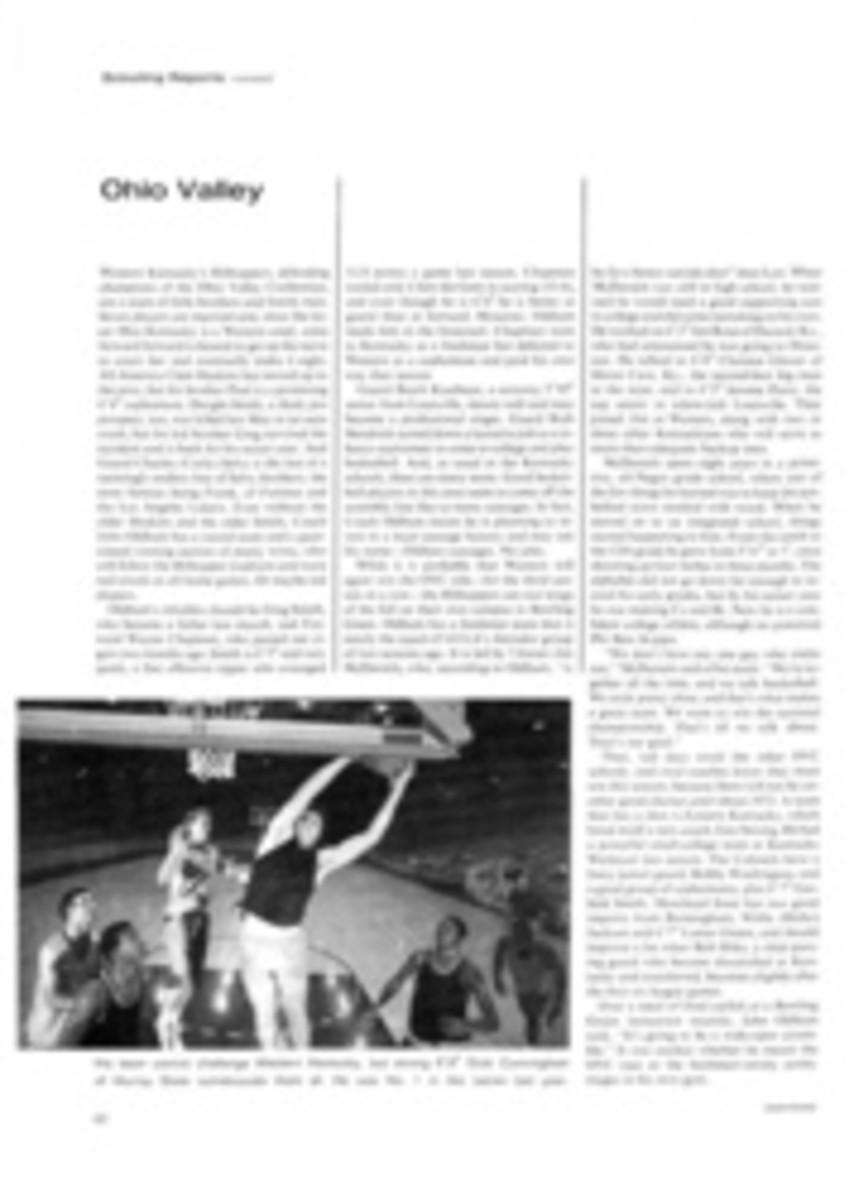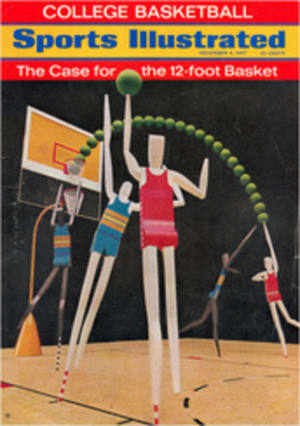
Too fast for the three fastest
There was a time, in the not too distant past, when speedsters Craig Breedlove, Lee Taylor and Pete Knight led relatively docile lives. All Breedlove had done was work the world land-speed record up to 600.6 miles per hour in his Spirit of America. Taylor had gone just under half that in setting the water-speed mark this past June in his jet-powered Hustler, and Knight, a major in the U.S. Air Force and a test pilot for the X-15 program, had sputtered along at just over 4,500 mph in the fastest flight ever made by a manned aircraft.
For all three of them, however, this blissful serenity came to an abrupt halt last week when they suddenly found themselves in Lake Havasu City, Ariz., taking part in an outboard motorboat marathon, which, since there are no other claimants and the purse is big ($27,750), bills itself as the "world outboard championship."
The appearance of Breedlove, Taylor and Knight had been planned as one huge publicity stunt, of course, since their combined times in any racing outboard motorboat before last week would not have added up to the time it took to complete one lap of the four-mile, boomerang-shaped Lake Havasu course. The closest Breedlove had come to setting any record on water was in 1964 when he wound up in the middle of a canal at the end of a trial run at the Bonneville Salt Flats. Taylor had never driven a boat in a race, although he was once towed behind one at 92 mph on a pair of water skis. And Major Knight? Well, he's currently stationed at Edwards Air Force Base in California, about three sand dunes away from the middle of the Mojave Desert, and, as he blandly put it, "I don't see water too much out there."
Publicity stunt or not, however, the men responsible for the Lake Havasu regatta—particularly Press Agent Larry Laurie—quickly discovered, to their dismay, that Breedlove, Taylor and Knight were very competitive characters—experience be damned. At the start of the regatta week everything had seemed simple to Laurie. Get the guys in town, have them sign a few autographs, pose for a few pictures and get them out. In between, maybe, they could put in a few laps in a little runabout, stay away from the real drivers and in general keep out of harm's way.
But Breedlove and Taylor arrived early, and after each had taken a few laps in the tired twin-engine boat Laurie had picked out for them, they nicely, but firmly, threw a stink. The unwieldy boat, inappropriately numbered X-15, had two Chrysler 105s, but the hull was not designed to support more than one good-sized engine.
"This is like putting a blown Hemi on the end of a Go-Kart. Above 40 mph you can't control it," said Taylor.
"Gee," said Breedlove, "I understand it used to be somebody's fishing boat—and painted pink, for gosh sakes."
The third member of the team, Knight, did not arrive until Friday, the day before the first four hours of the marathon. He was spared the embarrassment of a ride in the X-15, but after a quick conversation with Breedlove and Taylor he quickly and utterly concurred.
"No sweat," said Laurie as the sweat poured from his brow, and after a frantic conversation with Jack Oxley, a West Coast representative for Chrysler Marine, he came up with U-707, a catamaran racing hull with three Chrysler 105s on her stern. After another equally frantic conversation between Oxley and the driver who was supposed to drive the 707, the team of Breedlove, Taylor and Knight was at last properly mounted, and everything looked great.
Except, of course, that Laurie's problems were now slightly compounded. All of a sudden he had the lives of three very famous people to worry about, since each, separately and alone, would be required to drive at high speed in a very fast and very unfamiliar racing craft. "Can you handle it?" he perspired. "Is it gonna be all right?" Breedlove, Taylor and Knight just smiled. Once, with Knight on the course, Breedlove—who can be very puckish away from Bonneville—grinned at Taylor. "Let's go tell Larry that Pete flipped and we need another boat. It'll drive him up the wall."
No one, of course, gave the three any chance of winning the marathon. Tinker Collinge of Anaheim, Calif. said, "The first time they carve a doughnut [spin out] in the race, look back and see five boats bearing down on them, they'll start to wonder what it is all about." And Dick Lucero, the assistant race director and an ex-driver, said, "It would be like putting me in a Formula Vee. No way."
Oblivious to this sort of conversation, the three spent their free moments talking about the many things they have in common. Breedlove is building a boat to go after Taylor's water-speed record and asked Taylor all sorts of questions. Taylor responded, "I know—I am convinced—I can go faster than a land-speed car in the Hustler."
Breedlove and Taylor in turn asked Knight about his jet engines and heard some weird technical explanations.
The expectable ribbers who joshed the three were led by another racer whose presence might at first have seemed to be the result of further press-agentry. He was Mike Reagan, the 22-year-old son of the governor of California. Saturday morning, just before the flare was shot to start the first half of the race, Mike walked by Breedlove's table and said, "Don't forget. Turn, baby, turn."
Roughly, marathon racing is to outboard motorboating what Le Mans is to auto racing—but oh what a difference in the racecourses. Lake Havasu, set in a valley between the Mojave and Chemehuevi mountains, is not really a lake but a dammed-up section of the Colorado River. Although the water is calm under normal conditions, there is always a 7-mph current. This is the first of the hazards faced by the drivers. The second is the boats themselves. Their overgrown power plants churn up white water and send wakes back and forth to batter each other like sniper bullets. The result is a fiendish chop with troughs that are sometimes three feet deep. Even in a calm lake there is very little smooth water in the course of an afternoon's racing. As a consequence of the skittering and porpoising, four boats had sunk at the end of the first four hours, seven flipped, and more than 20 were beached, with good-size hunks out of their hulls. Of the 126 starters, only 73 were running at the end of the first day.
The Breedlove-Taylor-Knight boat was not among them. Taylor was chosen as starting driver, with unanimous instructions from the others to just "survive the first two hours and figure out what's happening." He obeyed halfway, surviving the first hour well, driving relatively slowly at first but keeping clear of the vast hordes that often bunched around the four-mile course. Slowly he picked up his speed and twice on relatively smooth straights managed to match speeds with the leader boats.
Then, shortly after the one-hour mark, while rounding a series of three turn buoys, a little single-engine runabout spun to the front and to the left of 707, kicking up a huge spray and soaking Taylor's engines with water. All three died, and 707 was towed in. The 12 laps Taylor had completed put him ahead of 29 boats overall. "The boat was flooding," said Taylor to Breedlove and Knight, "but I wanted to make sure you guys got a chance in it tomorrow."
Well, Breedlove got his chance but, thanks to a 22-knot wind that added just one more squirrelly element to the already dangerous conditions, Knight never did get into the boat. About 90 minutes into the second four hours and just beyond the turn where Taylor had had his mishaps a day earlier, Breedlove slapped a wave which lifted the front end of his boat high into the air. Then the wind got under it, raised its bow even higher and suddenly the world land-speed record holder found himself in the cold waters of the lake.
Fortunately, the boat did not land on its back but did a flip in midair, slammed back down right side up and growled angrily in circles around Breedlove. He managed to get back into the boat, found the two outside engines still running and refused to accept the offer of a tow, which would have disqualified him. As he attempted to start off again, he learned he had no control. The steering was jammed, and that was it. He rode 707 in behind the towboat, teeth chattering and sporting a good-size bruise on his right arm. But he was still smiling. "These people are crazy," he said.
That brought the crowd's interest back to the professional drivers, and when the signal flares ending the race went up at 3 p.m., the winner was a boat owned jointly by young Reagan and Rudy Ramos. Ramos and Bill Cooper did most of the driving, but it was Reagan, in his first outboard competition (he drives about 10 inboard races a year), who was in the boat when it received the checkered flag. By that time Breedlove, Taylor and Knight were headed back to California to resume their more humdrum careers.

